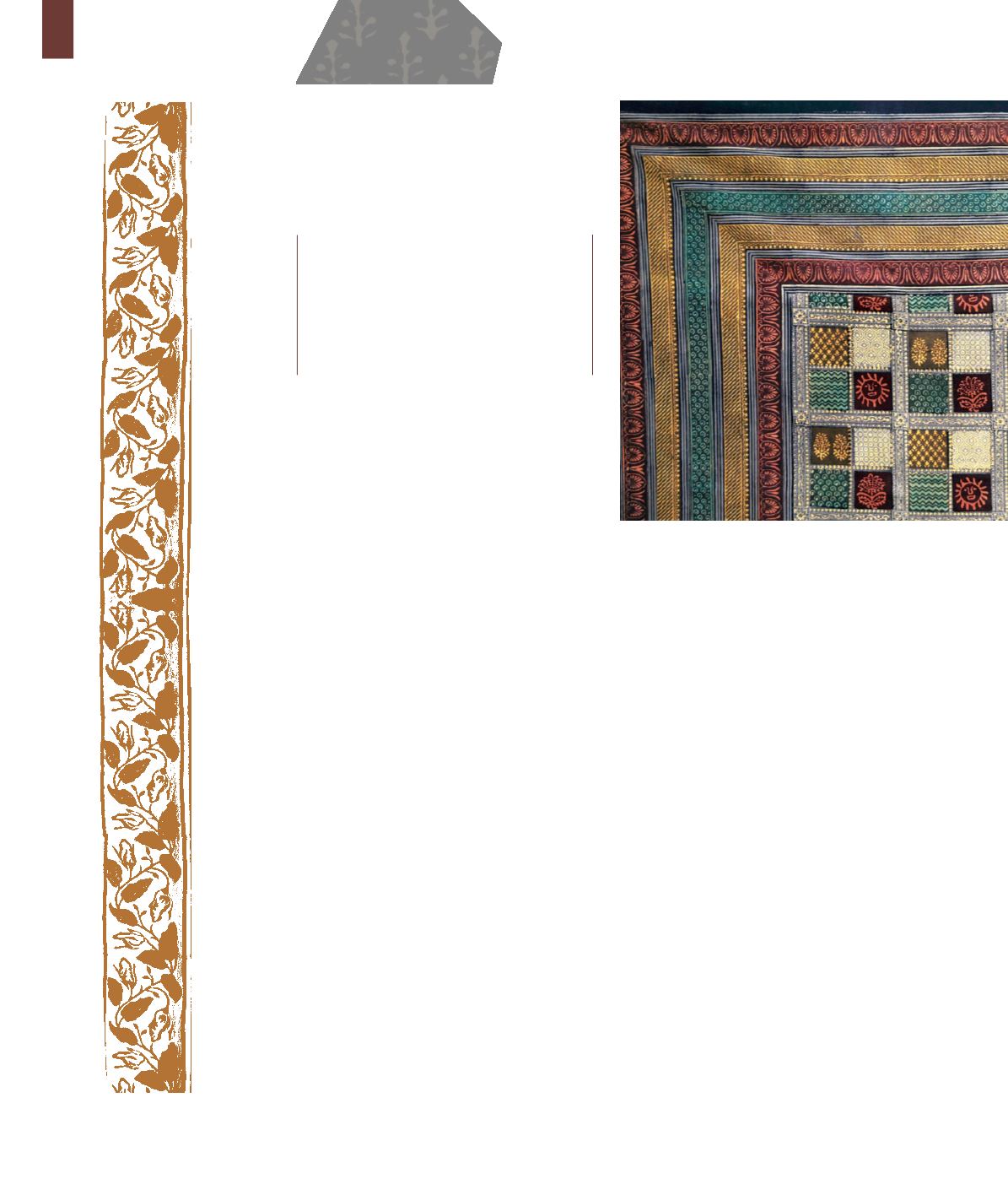
42
Bagru is about 30 kilometres from Jaipur, the
capital of the state of Rajasthan. It is a small
town whose name derives from the word
bagora,
the name of the island in a lake that
once existed here. Bagru is home to about
250 families involved in hand-block printing.
It is a matter of great pride to us that my
family continues the practice in its authentic,
traditional expression, which I feel is very
important. An artisan can skip or shorten some
steps of the technique that lasts for several
days and multiple processes, and the buyer
will not realise whether or not the authentic
processes have been followed as the end result
looks exactly the same. However, we feel it is
paramount to follow all the processes as has
been the tradition for centuries.
The Birth of Bagru
In the past, Bagru prints of different
expressions were mainly used by the local
population, particularly for garments such as
ghaghra-odhni
worn by women as well as floor
coverings. The printers would sell these textiles
in the local weekly markets called
haat
. Today,
Bagru printed cloth is famous across the
country and even overseas. Bagru hand-block
printing broadly has three expressions – Fadat,
Bagru and Dabu.
Today, Bagru printed cloth
is famous across the coun-
try and even overseas. Bagru
hand-block printing broadly
has three expressions – Fadat,
Bagru and Dabu.
Fadat printing features specific motifs on
cloth that traditionally were caste or tribe
specific, and thus wearing the cloth as a
garment identified the caste or tribe of the
wearer. Originally, Fadat was worn by many
communities. Bagru printing is our regular
hand-block printing done using wooden blocks
carved with motifs, which are dipped in dyes
and then pressed on fabric.
Dabu printing goes a step further as it is a
mud-resistant hand-block printing technique
where parts of the motifs are hand-block
printed with
dabu
or clay that acts as a resistant.
This may be done before the cloth is dyed so
the sections covered by clay take on the base
colour – off-white. Resist printing can also be
done after the initial dyeing of the fabric so
that the sections with the resist take on the
colour the cloth has been dyed in. After the
next dyeing, the cloth takes on a darker hue of
the same colour or a different colour. When the
cloth is finally washed the different colours of
the pattern are revealed.
We work with natural dyes, some of which
we make ourselves while some we source.
Blue is obtained from the indigo plant, green
from a mix of indigo and pomegranate, red


